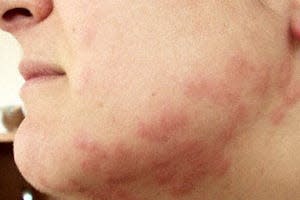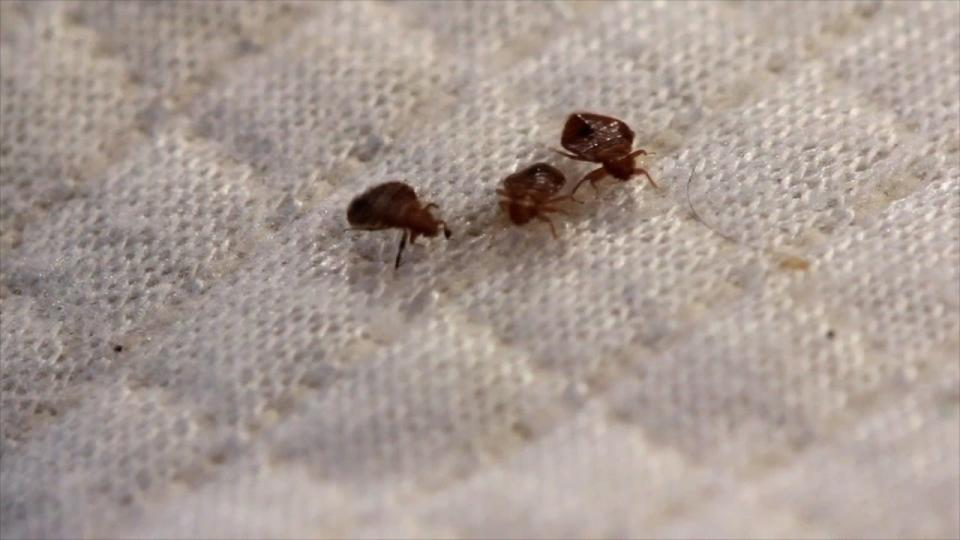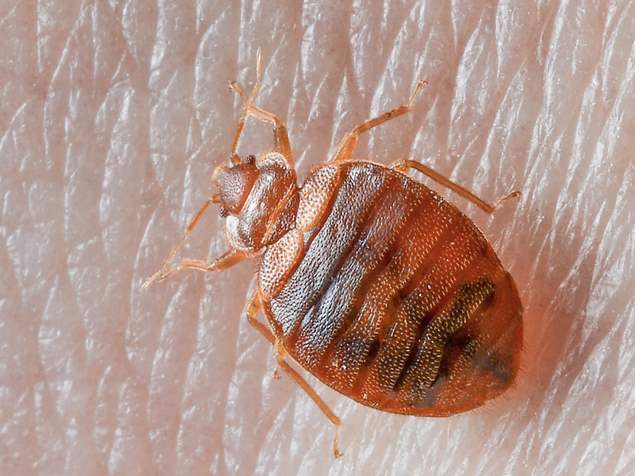Milwaukee has (again) been named one of the top cities in America for bed bug infestations
Here's something that'll give you the creeps ― bed bugs are on the rise in Milwaukee.
On Monday, the international pest control company Orkin released its annual list of the 50 most bed bug-infested cities in the United States. Milwaukee was named the 25th-most bed bug-infested city, moving up 15 spots from 40th-most infested last year. The only city to rise more spots in the rankings was Greensboro, N.C., which moved up 25 spots from 43rd to 18th.
The most bed bug-infested cities list is based on Orkin's data on which metropolitan areas they performed the greatest number of bed bug treatments in between Dec. 1, 2022, and Nov. 30, 2023. The ranking includes both residential and commercial pest control treatments.
What U.S. city has the most bed bugs?
Chicago topped Orkin's list for the fourth year in a row. It's been a rough year for the Windy City in terms of pests. Chicago was also named America's most rat-infested city by Orkin last year. Way to hit Milwaukee's southern neighbor/rival when they're down.
New York and Philadelphia held the second and third spots, respectively, for the second year in a row.
What are America's 50 most bed bug-infested cities?
Chicago
New York City
Philadelphia
Cleveland-Akron, Ohio
Los Angeles
Detroit
Washington, D.C. (+2)
Indianapolis (-1)
Charlotte, N.C. (+5)
Champaign, Ill. (+1)
Columbus, Ohio (-1)
Cincinnati (+1)
Atlanta (+3)
Grand Rapids, Mich. (-2)
Denver
Baltimore (-8)
Richmond, Va. (+9)
Greensboro, N.C. (+25)
St. Louis (+6)
Youngstown, Ohio (+7)
Pittsburgh (-3)
Dallas-Ft. Worth (-5)
Flint, Mich. (-2)
Raleigh-Durham, N.C. (-4)
Milwaukee (+15)
Charleston, W.Va. (-7)
Greenville, S.C. (-3)
Norfolk, Va. (-5)
Davenport, Iowa (+8)
Nashville, Tenn. (+3)
Tampa, Fla. (+10)
Toledo, Ohio (+6)
Dayton, Ohio (+1)
Knoxville, Tenn. (-4)
Las Vegas (new to list)
Omaha, Neb. (-4)
South Bend, Ind. (-9)
Houston (+6)
Cedar Rapids, Mich. (-8)
Ft. Wayne, Ind. (-5)
San Francisco (-19)
Buffalo, N.Y. (-13)
Harrisburg, Pa. (-7)
Seattle (-5)
Miami
Orlando, Fla. (+1)
Minneapolis (new to list)
Oklahoma City (new to list)
Louisville, Ky.
Lexington, Ky. (-4)
What do bed bugs look like?
Bed bugs are about the size of an apple seed. They're quite small, measuring roughly 1-to-7 millimeters, or up to 1/4 of an inch, long. The little pests have a flat, oval body and dark, protruding eyes, as well as short antennae.
Adult bed bugs are reddish-brown in color after feeding on blood. Young bugs are whitish-yellow and closer in size to a poppy seed.
You can learn more about the appearance of bed bugs throughout their life cycle on the U.S. Environmental Protection Agency's website.
Why are bed bugs a problem?
Bed bugs feed on human blood, often when people are sleeping. The bugs are not known to transmit or spread disease, the EPA says, but they can cause itchy bites that irritate human hosts.
Bed bug bites can affect each person differently. Bite responses can range from an absence of any physical signs of the bite, to a small bite mark, to a serious allergic reaction, the Centers for Disease Control and Prevention say. While the bugs aren't dangerous, an allergic reaction to several bites may require medical attention.
Additionally, sometimes excessively itching the bites can increase the chance of a secondary skin infection, the CDC warns.

Another sinister thing about these pests is that they travel easily without human detection.
"Bed bugs are usually transported from place to place as people travel," the CDC says. "The bed bugs travel in the seams and folds of luggage, overnight bags, folded clothes, bedding, furniture and anywhere else where they can hide. Most people do not realize they are transporting stow-away bed bugs as they travel from location to location, infecting areas as they travel."
Bed bugs can also spread quickly. Female bugs can deposit one to five eggs per day and can lay as many as 500 eggs in their lifetime, Orkin says. The bugs can survive several months between blood meals.
"Bed bugs are extremely resilient, making them difficult to control. As travel plans ramp up, it’s important that Americans know how to protect themselves through pest identification and proper control," Orkin entomologist Ben Hottel said. "While bed bugs are visible to the naked eye, they are excellent at hiding. Involving a trained professional at the sight of a bed bug introduction is recommended."

How do I know if I have a bed bug infestation on my hands?
Most people don't realize they have a bed bug problem until their skin breaks out in itchy red welts. These bite marks can take as many as 14 days to appear, according to the CDC.
The CDC and EPA recommend you check your bed sheets or mattress for the following signs:
Dark spots (about this size: •), which are blood-filled fecal matter excreted by bed bugs.
Pale yellow exoskeletons, which look like tiny eggshells, that baby bed bugs shed as they molt.
A musty, sweet odor that bed bugs produce through glands on their lower body.
Blood stains where bed bugs have been accidentally crushed.
Live bed bugs in the seams, piping and folds of your mattress.
How do I prevent a bed bug infestation?
Here are some tips Orkin and American Pest Solutions recommend:
Inspect your home for signs of bed bugs regularly. Check the places where bugs hide during the day, including mattress tags and seams, and behind baseboards, headboards, electrical outlets and picture frames.
Decrease clutter around your home to make it easier to spot bed bugs on your own or during professional inspections.
Vacuum frequently.
Examine all secondhand furniture and clothing before bringing it inside your home.
Bed bugs will lay eggs in dirty clothing but hate the heat, so wash and dry your laundry on the hottest temperature setting when returning from a trip.
Inspect your bedding and luggage carefully if you've been traveling. Look for signs of bed bugs. If you see signs of bed bugs on items that can't be washed, keep those items outside of your home until they can be treated.

How do I get rid of bed bugs if I find them?
If you find bed bugs, it is recommended you call a professional exterminator as soon as possible.
If you can, dispose of any beds, mattresses and cloth-covered furniture that bed bugs have infested. Wrap contaminated items in plastic to prevent any bugs from escaping, and label the items as "bed bug infested" so others don't unknowingly bring the pests into their homes.
Finally, bed bugs hate the heat, so if you find them on your clothes, it is recommended you dry your clothes on a high-heat setting.
Indianapolis Star reporter John Tufts contributed to this report.
This article originally appeared on Milwaukee Journal Sentinel: Bed bugs in Milwaukee among worst in the nation, Orkin study finds

